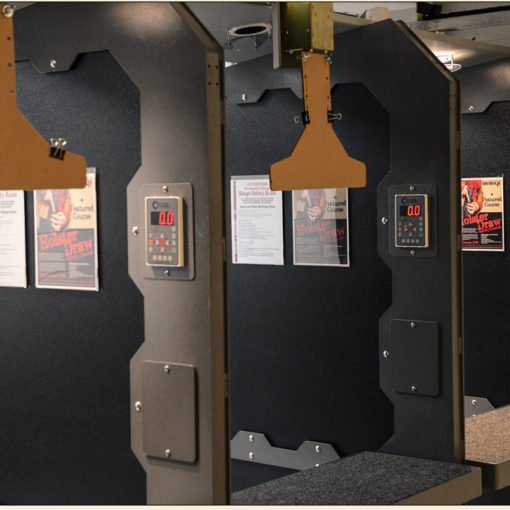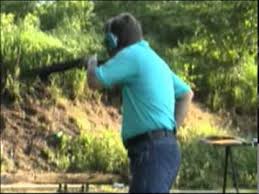An important aspect of maximizing your shooting performance with any handgun is a proper grip. Let’s explore what we feel is necessary to achieve the best purchase on your favorite handgun.
First and foremost, it is of paramount importance to pick a handgun that fits you properly. We’ve seen time and again shooters with guns that are either too big or too small for their hands. They’ll expound on how much they like it, yet we cannot imagine why. It should be obvious that no one will shoot to full potential with an ill-fitting piece. Finding the right fit is best achieved by handling several models of handguns before plunking down your hard-earned coin. Obviously, due to hand size and finger length etc. what works for some will not work for others. Don’t rely on what works for the local gun shop owner or gun guru. Find out for yourself. Here’s what to look for.
Getting Things All Lined Up
You need the gun nestled in your hand in such a manner that it lines up with the long bones of the forearm (Photos 1&2) and yet still gives you adequate trigger reach. This will position the entire arm to best soak up recoil. As mentioned in the article on trigger control, finger placement on the trigger should be at the distal joint for best results. Some trigger reach problems can be solved with picking the right grips, however this is typically a revolver only proposition. There are a few semi-autos such as the 1911 and Sigs that have some options for changing trigger reach. Glock frames can be whittled away by a competent gunsmith specializing in such work.


Held to a Higher Standard
A high hold on the gun is one of the most efficacious aids to recoil management. The closer you can get to the actual bore-line of the pistol, the better off you will be. Muzzle flip will be much reduced and shot to shot recovery speed greatly enhanced. Grasp the pistol so that it is as low as possible in the hand. Force your hand high onto the back-strap, so much so that you create a dimple of flesh there. (Photo 3)

Hold Me, Squeeze Me
How tight to grip the pistol is often a topic for debate. Consider the source when taking this advice. If the shooter is from a PPC, Action Pistol, or Bulls-eye background you will likely receive different answers. All have validity for competition and I’ve used every one at some point or other. “Hold it firmly as a hammer when driving nails.” “Maintain 40% grip with the gun hand and 60% with the support hand.” “Hold it lightly as though it were a quail, firmly enough so that it does not fly away yet delicately so as not to crush it.”Bull Hockey….CRUSH down on the grip. Hold it as tightly as you can without setting up tremors in the hands. If you are trying to shoot full power ammunition from a fighting handgun and want to deliver the shots quickly, it’s the way to go. Under the effects of body alarm reaction and fight or flight reflex, one of the first things to leave you is manual dexterity. Its seems disingenuous at best to suggest some fine motor dexterity, subtle nuance type grip. Limbs (in this case, fingers) are sympathetic. During this inter-limb response, what one is doing, the others want to do as well. Not holding the gun hard while moving the trigger finger can allow the other fingers to flex and pull the gun off line. A hard hold on the pistol eliminates this common malady called “milking” which tend to make the shots go south by southwest for the right handed shooter. Muscle down on the grip with both hands as tightly as you can without shaking. Curl the thumb down to add even more strength.
Two Hands are Better than One
Now that we have a strong grip with the shooting hand let’s place the support hand properly. While maintaining your shooting grip with the gun hand, bring the support hand up as high under the trigger guard as possible and place the fingers parallel to those of the gun hand. This will give a good solid interlocking wraparound type hold (Photo 4). Forget the old “cup and saucer” routine (Photo 5). It does nothing for you but help hold the pistol aloft. If you need help with that then buy a lighter gun or lift weights. Okay, now I bet you’re asking where those pesky thumbs are supposed to go.


Thumbody Please Tell Me
If you have curled the gun hand thumb down as recommended then the support hand thumb should curl down as well. Be thinking thumbprint over thumbnail here. Put the thumbprint of the support thumb on the thumbnail of the gun thumb (Photo 6). You’ll find this is indeed a strong grip for shooting and retaining the pistol if someone attempts to disarm you. Depending on hand and gun size, you may find the thumbs curled down grip causes some interference with the trigger finger.An alternate thumb position you can consider is both thumbs pointing toward the target (Photo 7). This position does tend to aid in lateral stability of the pistol and is particularly valuable when tracking from target to target. Be warned, however, thumbs forward may cause problems with the slide stop function for the right-handed shooter. (Yet another reasons why us southpaws are better, so there!)


Coming to Grips with it All
In summary, get as high a hold on the pistol as possible, crush down on the grip, and curl the thumb down. Obtain a similarly high hold with the support hand and curl that thumb down to achieve thumbprint over thumbnail. You now have a very strong grip for BOTH shooting and weapon retention. It will help you finish the fight.
Stay Safe
Bob Houzenga



